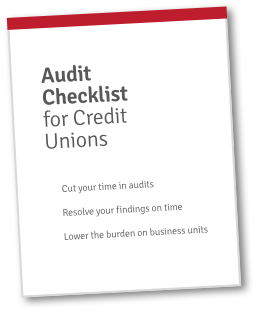Regulatory compliance is like flossing. Or like eating your vegetables when you’re a kid. Or it’s like remembering to stretch before a workout (or it’s like the workout itself).
Basically, you know you’re supposed to do it. It’s there to keep you healthy and performing at your peak. It ensures that you’re not in danger of long-term consequences.
Regulatory compliance also helps members. Until, sometimes, it doesn’t.
Regulatory Compliance and Learning from the Past
It’s been a little over a decade since the last recession. Since then, the financial world tightened its belt—and its regulations—to prevent anything similar.
But many are challenging those regulations now. Economic prognosticators and doomsayers are sharing dire warnings about our global monetary health. That’s a lot of cautionary material, there. And it brings up a lot of thoughts about the current state of regulatory compliance for credit unions.
But we’ll let the economists handle the greater economic implications—and how they’ll affect the bottom line for credit unions.
Today, we’re interested in how regulations and compliance affect members.
When Regulations Help Members
This may be an unpopular opinion, but generally speaking, regulations help members.
For starters, it helps them even when they aren’t directly affected. On the regulation side of things, a compliant credit union is going to receive less scrutiny. They’ll spend less time following up on findings and remediating issues.
Not only that, but compliant credit unions spend less time—and consequently less money—on audits. That means they have more money to put toward their key differentiators:
-
- Lower fees
- Better rates
- Member service
Regulations also help members more directly. Stricter regulatory compliance increases member confidence in the credit union. That feeling of safety is particularly important—especially when faced with those dark prognostications from earlier!
When Regulations Hurt Members
There’s a common argument about how the regulatory burden interferes with credit union business. Instead of focusing on what makes credit unions great, staff must focus on compliance.
That focus on compliance also takes a lot of time and money. More and more staff are brought in to help. And, unless payroll is suddenly free, that staff time costs money.
But those regulations do prevent unsound banking practices. The regulatory cost increases the credit union’s resilience in difficult economic times. It’s better to feel impeded by regulations than to let a recession torpedo everything.
But sometimes specific regulations can hurt members directly. Here’s an example:
In one credit union, a very small minority of members needed extra collections effort. To maintain strict compliance with regulatory authorities, the credit union had to do things the hard way. They devoted an enormous amount of resources to this small member group. Unfortunately, it came at the detriment of the rest of their membership.

FREE: Audit Checklist for Credit Unions
4 key principles and 9 questions to jumpstart your audit planning. From leading credit unions.The Takeaways
We all know regulations aren’t perfect. So do the regulatory authorities—that’s why they keep changing them. But it’s important to remember that regulations are in place for the health of both members and the credit union.
Generally speaking, regulations are your friend. However, sometimes they’re not. And when they’re not, they hurt your entire mission.
We can’t help you with bad regulations. But we can help you breeze through audits. We can also help you prepare for audits and exams.
Subscribe to our blog to see more about credit unions, audits, and regulatory compliance. Or follow the links below to see what else we’ve been writing about.
THOUGHTS ON THE DIRECTION OF REGULATORY COMPLIANCE
WHERE DID THE NAME “REDBOARD” COME FROM?





